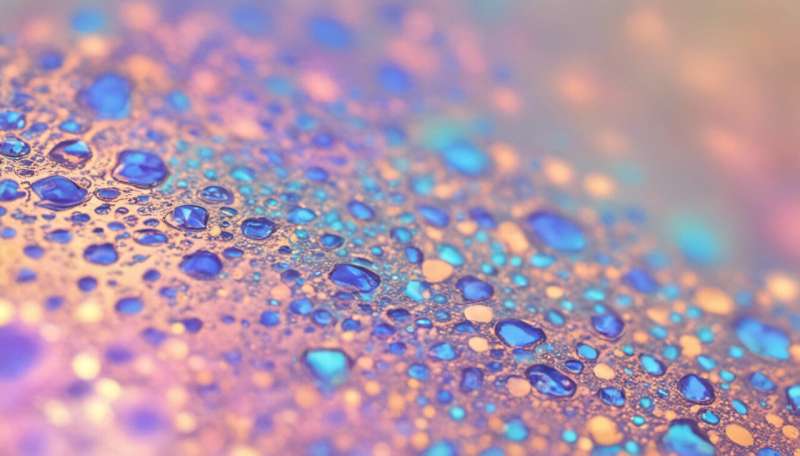Multifunctional coatings: Charged up and ready to connect

Gelatin, a well-known food ingredient, belongs to a class of molecules called polyampholytes that contain both positively and negatively charged components. When a polyampholyte is dissolved in liquid, this electronic structure imparts remarkable properties such as pH-dependent viscosity; it can also form a hydrogel.
Now, Satyasankar Jana, Anbanandam Parthiban and co-workers from the A*STAR Institute of Chemical and Engineering Sciences in Singapore have developed a polyampholyte with multiple capabilities—including the ability to turn ordinary plastics into novel coating materials, thanks to unexpectedly strong interactions between the polymer's charged sites.
Mixing cationic and anionic salts known as ion pair comonomers (IPCs) is one of the best ways to synthesize polyampholytes. Most IPCs are made from unsaturated molecular ions with very similar chemical reactivity. This approach generates long, charge-neutral chains with application in fields such as chromatographic protein separation.
Jana, Parthiban and co-workers, however, implemented a different strategy. They investigated polymerization of IPCs with unequal chemical reactivity: a cationic nitrogen-bearing ring known as vinylimidazole and a styrenesulfonate. The intense positive charges within vinylimidazole-based polymers mean that these polymers are frequently employed as ion-conductive materials; the weaker styrenesulfonate anion, on the other hand, finds use in surfactants and polyelectrolytes.
The team suspected that these IPCs, which turn into mobile ionic liquids at high temperatures, could create polyampholytes with asymmetric charge properties and unusual molecular interactions never encountered before.
By using free radical reactions to construct the vinylimidazole-based polyampholytes, the researchers observed that their hunch was correct: the polymers assembled into chains with immobilized cationic and anionic units. In fact, the strong intermolecular forces in these polyampholytes rendered them insoluble in both organic and aqueous solvents. Switching to a more controlled chain-transfer polymerization method yielded asymmetric chains with improved solubility characteristics.
The team exploited the active charge properties of their polymers to turn lightweight poly(methyl methacrylate), or PMMA, plastics into ionically cross-linked materials. Mixing a small proportion of the asymmetric polyampholyte into PMMA formed a three-dimensional polymer network as the ionic sites reacted with one another and with the acrylic chains. The authors note that this kind of ionic cross-linking can have beneficial impacts on the stiffness and fracture behavior of PMMA, and opens the door to other applications.
"The highly ionic nature of these polymers makes this approach useful for possible antifouling materials and layer-by-layer coating technology," says Jana. "We are also trying to synthesize novel substances with this procedure, such as ionically cross-linked hydrogels."
More information: Jana, S., et al. Vinylimidazole-based asymmetric ion pair comonomers: Synthesis, polymerization studies and formation of ionically crosslinked PMMA, Journal of Polymer Science Part A: Polymer Chemistry 51, 3260–3273 (2013). dx.doi.org/10.1002/pola.26720



















